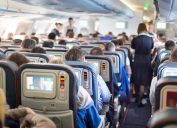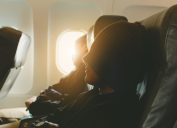These Are the Airplane Germs You Encounter When You Fly
Don't let these airport and airplane germs ruin your vacation.
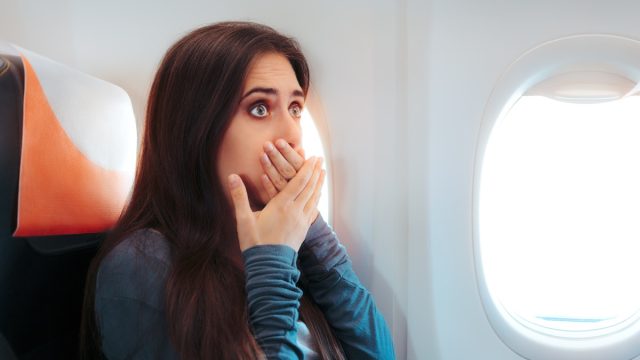
Nothing ruins a vacation quite like getting sick. After you spend months booking flights and hotels and rearranging your work schedule, all it takes is touching one contaminated surface or getting coughed on once to derail your plans completely. What's worse is that you aren't out of the woods once you reach the airport, either. Both airports and airplanes are chock full of bacteria that have the potential to end your vacation before it starts. Keep reading to learn about some of the worst airport and airplane germs you might encounter when you travel.
1
Pseudomonas

Unsurprisingly, those airplane tray tables are teeming with germs. Specifically, when Today correspondent Jeff Rossen swabbed tray tables for research in 2018, he found that some tested positive for the bacteria Pseudomonas, which can cause infections in open wounds.
According to the Centers for Disease Control and Prevention (CDC), multidrug-resistant Pseudomonas aeruginosa—a type of Pseudomonas—caused approximately 2,700 deaths in the United States in 2017, so be careful when traveling if you have a cut or scrape.
2
Stenotrophomonas

Pseudomonas is hardly the only type of bacteria you potentially encounter on an airplane. In Rossen's research, some airplane tray tables also came back positive for Stenotrophomonas, which is capable of causing an infection as well.
The good news? According to the National Center for Advancing Translational Sciences, Stenotrophomonas bacteria seldom colonize in otherwise healthy individuals. So, as long as you aren't flying with a serious sore or open wound, you should be A-OK.
3
Staphylococcus

Here's another reason to avoid those airplane tray tables: When CBC News in Canada swabbed several surfaces on 18 different Canadian flights, various tray table samples tested positive for Staphylococcus bacteria.
"If you're coming into contact with high levels of Staphylococcus auerus, such as what you're seeing [in this study], then you definitely are at a higher risk of having something go wrong," microbiologist Jason Tetro explained to CBC News. Staphylococcus can cause skin infections and food poisoning alike, so be careful when the time comes to lower those tray tables!
3
E. coli

Airplane germs are scary for certain, but you begin to encounter bacteria long before you step foot on the plane. In addition to swabbing airplane tray tables, Rossen also checked out the TSA bins used at security checkpoints. What they found was that these bins contained E. coli, which the CDC notes can cause everything from diarrhea to pneumonia.
4
Klebsiella
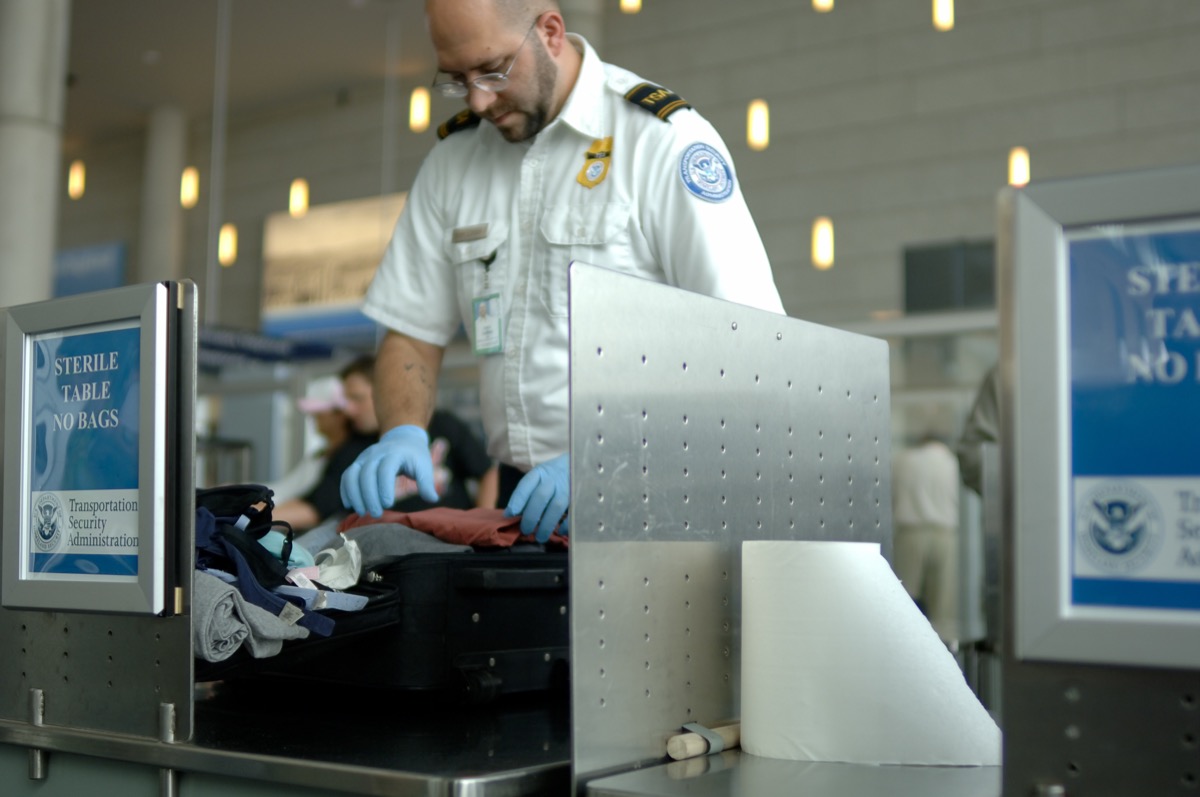
Another germ you might encounter when going through airport security is Klebsiella, as per Rossen's findings. As the CDC notes, this is a gram-negative bacteria "that can cause different types of healthcare-associated infections," ranging from pneumonia to meningitis. In other words, so long as you aren't already sick or injured, encountering Klebsiella shouldn't do you any harm.
5
Acinetobacter

Acinetobacter is a type of bacteria found in soil, in certain bodies of water, and on TSA bins at the airport, as Rossen's investigation showed. The CDC warns that one strain of the bacteria—Acinetobacter baumannii—can cause blood infections, UTIs, and even pneumonia, so make sure to wash your hands as soon as you're through airport security.
6
Rhinovirus
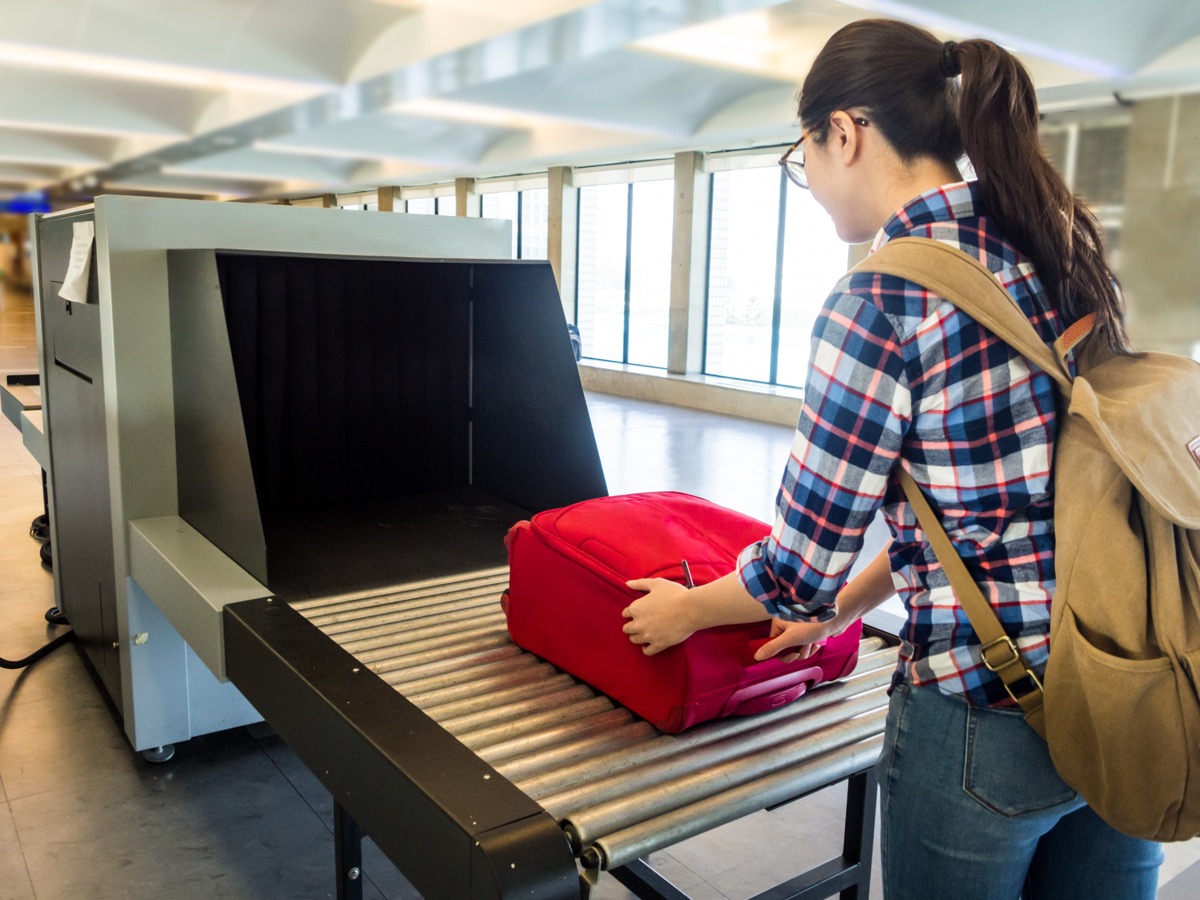
The last thing you want to deal with when you're on vacation is the common cold. Unfortunately, though, you're increasingly likely to come down with this illness simply by being at the airport. In one 2018 study published in BMC Infectious Diseases, researchers collected surface and air samples from a Finnish airport during peak flu season. What they found was that half the luggage trays sampled contained traces of a respiratory virus. And of all the positive respiratory virus samples found in the study, 40 percent were rhinovirus and 10 percent were influenza A virus.
7
Propionibacteriaceae

When researchers collected hundreds of samples from 10 flights in 2019, they noted in their study published in Microbial Ecology that the most abundant bacteria both in the air and on surfaces was Propionibacteriaceae, which can cause acne.
However, these findings in particular are generally nothing to fret over. As the researchers wrote, "the vast majority of airplane-associated microbes are … non-pathogenic."
8
Streptococcaceae

The researchers behind the same Microbial Ecology study found that there was a large presence of Streptococcaceae bacteria on airplane surfaces especially. Though this bacteria can cause bladder infections, it's important to note that this germ is generally present in all environments. So long as you're washing your hands and touching your face as little as possible, you should have nothing to worry about.

